论文总字数:20744字
目 录
1 绪论 1
1.1引言 1
1.2国内外研究现状 1
1.2.1图像处理方法在X射线缺陷检测中的应用 1
1.2.2 模式识别方法在X射线检测与识别上的应用 2
1.3文章流程概述 3
2 X射线焊缝图像预处理 4
2.1 256色图像转为灰度图 4
2.2灰度拉伸 4
2.3自适应的图像二值化方法 6
2.4灰度投影 7
2.5中值滤波 8
2.6焊缝图像模糊增强 9
3 X射线焊缝图像缺陷提取 10
3.1对图像奇异点的处理 11
3.1.1腐蚀 11
3.1.2膨胀 12
3.1.3开操作 12
3.2图像连通性 12
3.3缺陷提取与背景分离 13
3.3.1边缘检测 13
3.3.2目标区域填充 14
3.3.3缺陷提取 15
4 实验比较与分析 15
5 结论 16
参考文献 17
致谢 19
基于形态学的焊接底片缺陷提取方法
朱星辰
, China
Abstract:Industrial welding usually have all kinds of defects, successful defect detection is an important basis for improving weld quality. X-ray detection is one of the most widely used in the non-destructive testing of welding defects. However, X-ray film is mainly evaluated by manual observation. Therefore, there are inconsistencies in subjective standard, easy to misjudge and negligence; Labor costs, low efficiency and other drawbacks. With the rapid development of pattern recognition methods and digital image processing technology, the researchers have a better understanding of the method of image detection. After careful investigation, this paper presents an intelligent evaluation model for X-ray weld defects. Firstly, the grayscale stretching is used to solve the problem that the background of some parts of the original X-ray image is too low. Secondly, the original weld defect image is cut to reduce the calculation cost by using the gray mapping method. Third, we use median filtering, corrosion, expansion and other methods to improve the cutting area, try our best to eliminate the singular points in the region and highlight the defective part of the binary map; then, employ con-nectivity, edge detection and hole fill to mark the defective part, and finally, if the defect area reaches 2% of the total area, the weld is considered unqualified.
Based on the experimental analysis of 80 different types of defects, the algorithm proposed in this paper has an average accuracy of 0.997 and an average specificity of 0.995, with the evaluate method proposed in this paper. The steps used in the algorithm have an important effect on the accuracy of the whole algorithm. Overall, the model is sufficient to judge the quality of a weld film and has a satisfied accuracy. In the same situation, the unacceptable welds identified by the manual are consistent with the unacceptable welds identified by the machine, and the accuracy rate is 0.963, which shows the high accuracy of the model. Therefore, through further exploration and improvement, the machine to identify the weld defects can replace the artificial weld defect identification.
Key words:Median filter; Grayscale stretching; Blurred image enhancement ; Corrosion and expansion; Image connectivity
1 绪论
1.1引言
近年来,我国经济飞速发展,现代工业的实力与规模也有了很大的提升,焊接工艺作为工业、制造业中的重要组成部分,在桥梁建筑、海洋探索、航天工程等领域占有重要的地位。
在日常工程中大量使用的焊接结构件,焊缝质量对焊缝结构件的使用寿命及工程安全性有着十分重要的影响。但是在实际焊接操作中,由于结构件中常常会出现焊接应力变形、焊接参数不稳定等影响,导致工业焊件中会出现各类缺陷,如夹渣、气孔、咬边、裂纹、烧穿、未焊透和未熔合等。如果一个焊接结构件有上述缺陷,其使用安全很难得到保障,若在某些工程中使用的焊接结构件达不到标准,甚至会造成重大的安全隐患与经济损失。
鉴于以上种种原因,准确检测焊缝缺陷就成了确保工业安全的重要研究方向。X射线焊缝缺陷检测是焊缝缺陷中大范围运用的无损检测技术之一,经过近年的发展,已经成为保障焊接结构件质量的主要方法。而目前X射线焊缝质量检测的评定最主要的还是采用人工评定,即将 X 射线胶片放在照射强烈背景灯上观察。对于一般评片人员来说,易疲劳、工作量大,从人工完成的评片任务质量看,则存在工作效率低、结果具有相当的主观性,易产生误判和漏判且胶片资料不易保存等缺点。为了大幅度降低人工成本,减轻工人的工作强度、大幅度提高底片评价的精确度,运用计算机对 X 射线缺陷图像进行自动检测就有了极为重要的意义。
进入20世纪80年代以后,世界计算机技术与电子技术发展迅速,对完成X 射线的数字化过程起到了很大的促进作用。近年来图像处理技术与模式识别方法在理论上有了很大的完善,发展迅速,研究人员提出的用图像处理技术对X射线数字图像进行检测与识别的方法在速度及正确率上都得有了很大的提升。但是由于X射线焊缝底片在数字化过程中本身大都存在对比度差,噪声大,焊缝中焊波背景干扰严重等缺陷,这些都增加了缺陷自动检测与识别中的难度。
尽可能地提高焊缝图像缺陷自动检测与识别过程中的准确度是研究的一个重要方向。一般而言,大部分缺陷检测系统中的流程都包含图像预处理、缺陷目标分割检测、检测目标正确识别[1]。在多数系统中,对缺陷类型的正确识别主要依赖于缺陷检测,因此缺陷检测就成为整个缺陷检测系统中最关键的一步,提高缺陷检测的正确率就显得尤为重要。
1.2国内外研究现状
随着计算机模式识别与图像处理技术在近几年间的飞速发展,国内外研究机构对于焊缝缺陷自动识别方法的研究有了很大的进步,其中一部分主要通过概率学、矩阵学等研究采集缺陷。而研究成果按照理论方法可分为图像处理方法与模式识别方法[1]。
1.2.1图像处理方法在X射线缺陷检测中的应用
(1) 图像预处理
缺陷自动识别中X射线图像质量是影响缺陷检测与识别的重要因素。而数字化的X射线图像常常存在噪声、灰度分布不均匀,对比度不高等问题,极可能会影响细小缺陷检测的精确度,因此有必要对原始射线图像进行完备的预处理,以提高图像质量。
图像预处理中第一步通常是降低噪声,而图片噪声大都具有高频率的特点,因而多数方法都采用低通滤波器进行去噪。在X射线图像去噪处理中使用最广泛的滤波器是中值滤波器。中值滤波与高斯滤波、均值滤波不同,不会去除某些较为细小的缺陷或是降低图像清晰度。并且,Wang和Liao[2]指出,在射线图像消除噪声时,鉴于X射线数字图像中灰度级的变化,难以选择滤波器的种类。同时,文章又指出或大小的中值滤波器对X射线焊缝图像最适用。X射线图像去噪的另一个效果较好的滤波器是Fabrizio Russo[3]所描述的非线性模糊滤波器。
在X射线检测过程中,由于曝光不充分、焊缝部分厚度变化、后期处理不足等因素[4],都会导致获得的背景与焊缝对比度偏低,极易造成缺陷检测识别的误检漏检。与此同时,如果X射线数字化过程中的灰度量化机制不完善,极有可能造成对比度较低的问题。在此情况下我们需要进行对比度增强,其目的是在尽量不影响图形其他区域的前提下,尽可能提高包含缺陷区域的对比度,增加图像在工件与背景交界处的辨识度,保证后续处理能够获得更良好的结果。
剩余内容已隐藏,请支付后下载全文,论文总字数:20744字
相关图片展示:
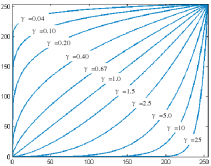
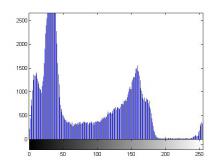
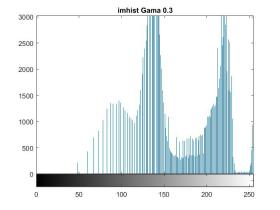
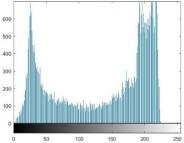
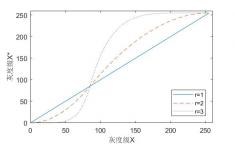
该课题毕业论文、开题报告、外文翻译、程序设计、图纸设计等资料可联系客服协助查找;


